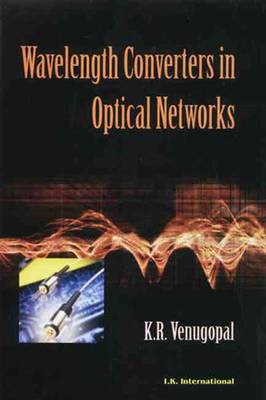The first generation networks built before the emergence of fiber optics and the second generation networks which used fiber as a replacement for copper links in Local Area network (LAN), Metropolitan Area Network (MAN) and Wide Area Network (WAN) are not adequate to meet the emerging integrated demands of the communication applications. Huge bandwidth must be provided to support applications such as super-computer interconnect, videoconferencing, etc., co-existing with smaller bandwidth requirements of data, audio, and many other applications for thousands of end-users.
Wavelength Converters in Optical Networks deals with the third generation networks that use Wavelength Division Multiplexing (WDM), wavelength routed optical networking technology. This technology can efficiently utilize the enormous bandwidth of the optical fiber and has been able to meet the emerging integrated demands of the communication applications
Key Features
- WDMA network architecture models have been presented
- The literature is supported and explained through diagrams and tables wherever required for the benefit of the students
- Simulation studies in the 12-node ring network, 28-node USA long hand network, 14-node NSFNET, 19-node European Optical Network (EON), 30-node INET network and 52-node arbitrary mesh network have been presented.
- Motivation for the present work and the organization of thesis has been outlined.
- Research activity in network topology recon figuration, issues in fault tolerances, and the objectives of various test beds in progress have been presented
- Last chapter presents the summary and contribution of the world
- ISBN13 9788189866280
- Publish Date 30 December 2013 (first published 31 August 2007)
- Publish Status Active
- Publish Country IN
- Imprint TechSar Pvt. Ltd
- Format Hardcover
- Pages 180
- Language English
